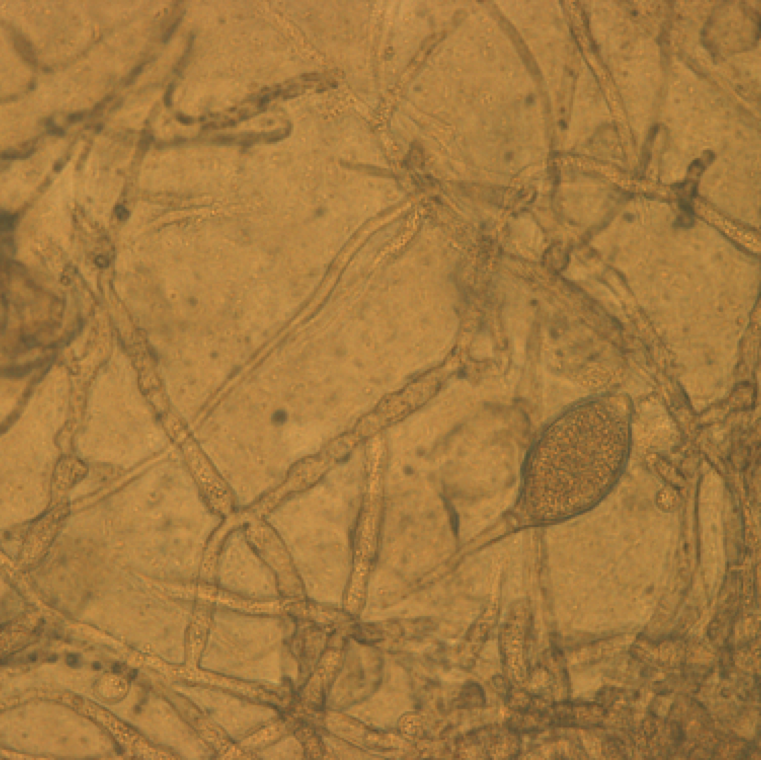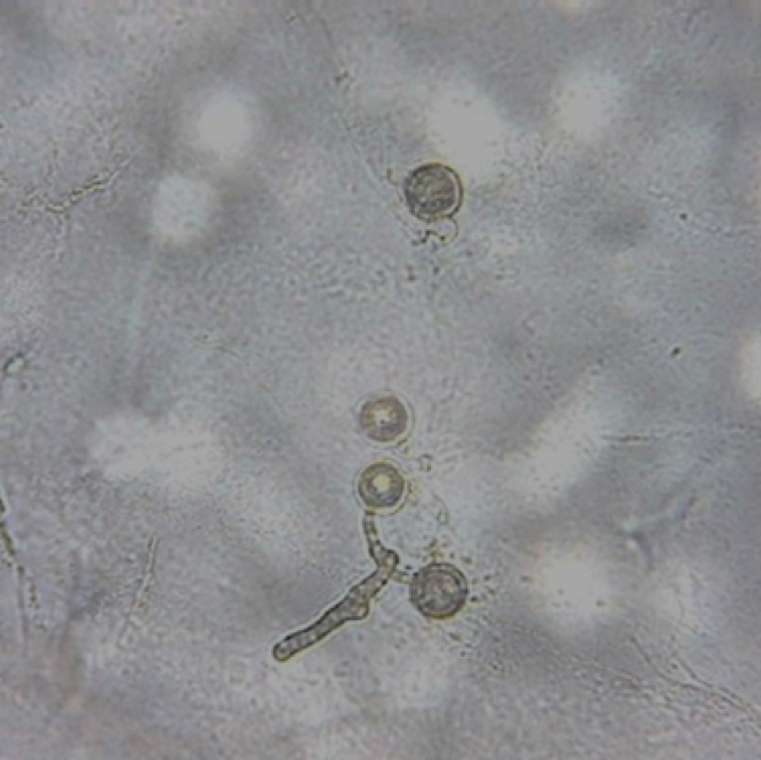

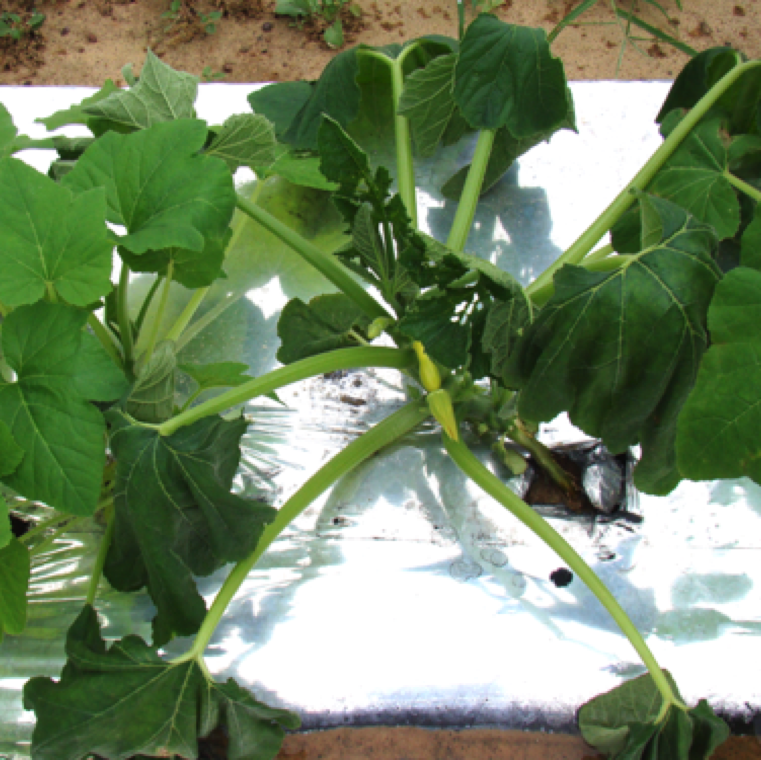
Initial symptom of Phytophthora crown and root rot is partial to complete wilting of infected plants. The disease can also cause root rot, damping off the transplants, crown rot, and aerial decay.
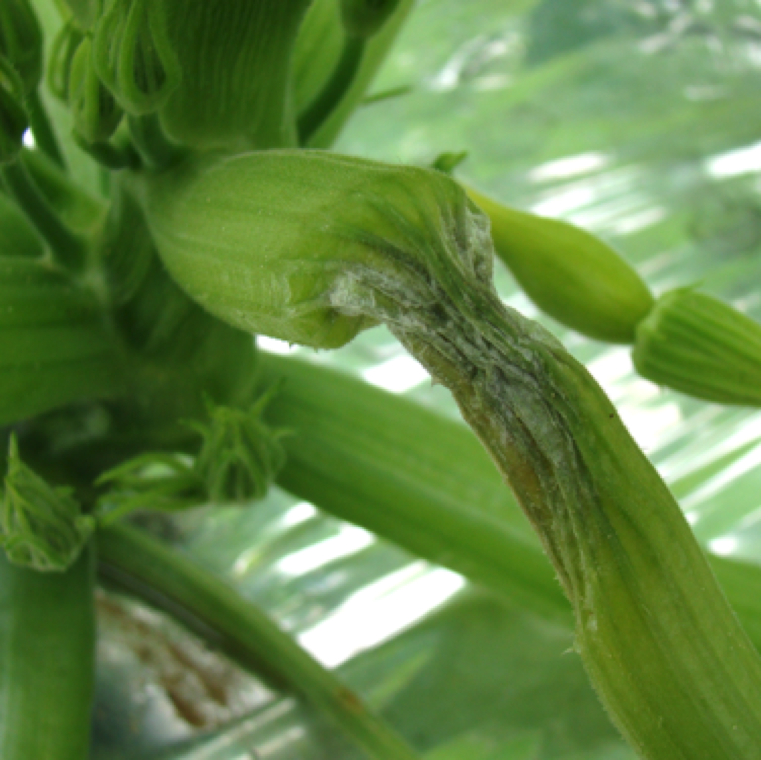
Above ground portions of the plant can also be highly infected as shown in this case where water-soaking and collapse of stem of the plants can be seen with or without visible mycelium.
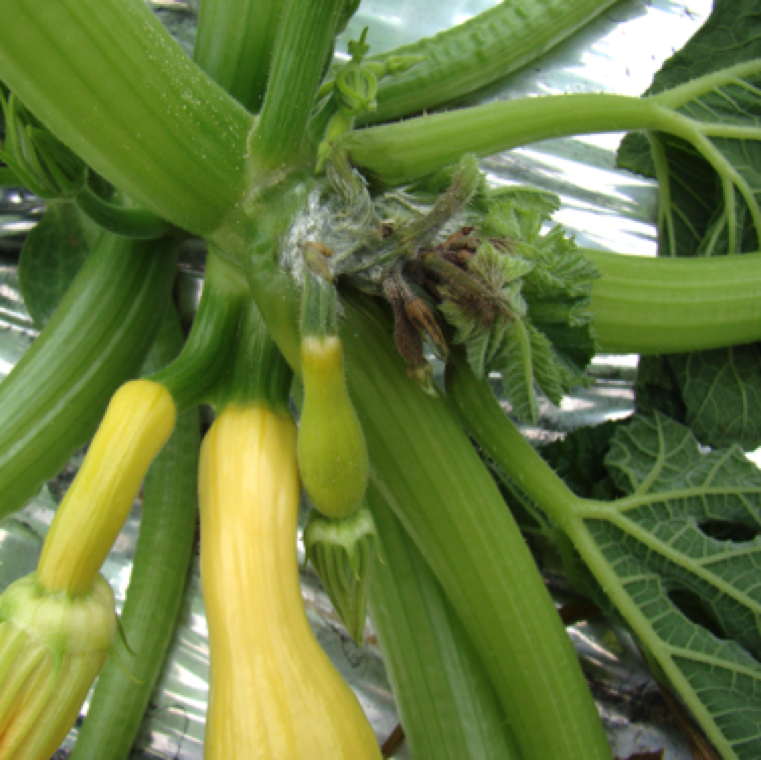
Infection point on flower buds can cause severe yield loss as in this case of squash. High rainfall or excessive irrigation favors occurrence of the disease in the presence of the pathogen.
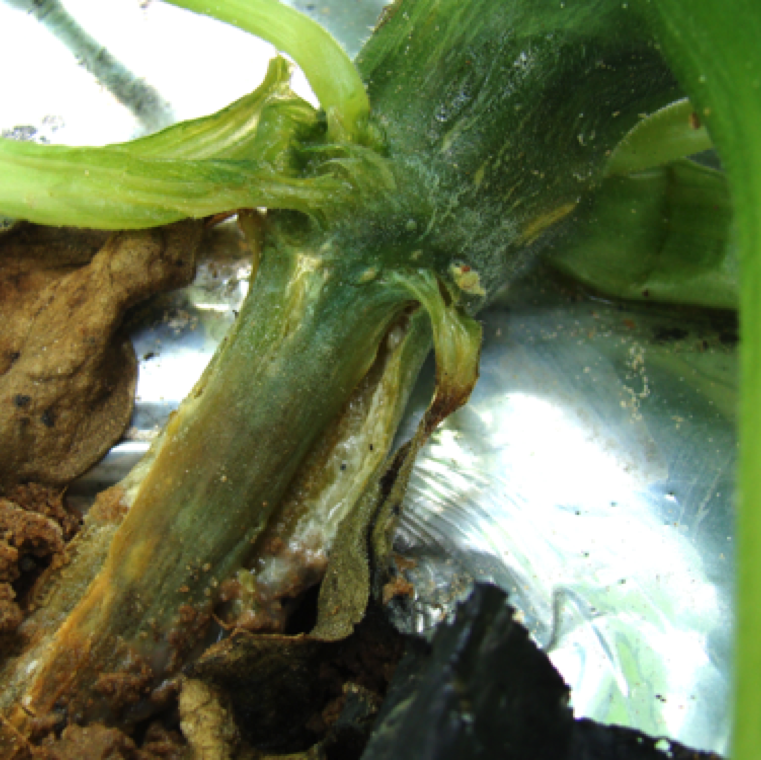
Crown rot on infected squash plants. The collar region of the stem in this case is severely infected and rotting can be clearly noticed. Early signs before rotting includes water-soaking of the stem.
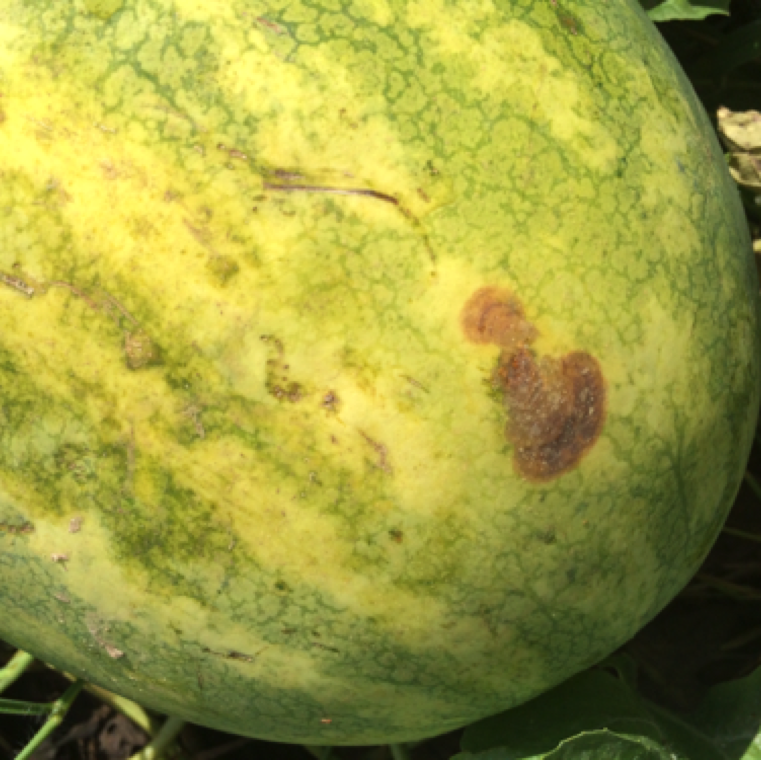
Fruits in contact with soil with the presence of the pathogen is highly susceptible. Water soaking of the fruits and brown or red blotch is an early indication of infection.
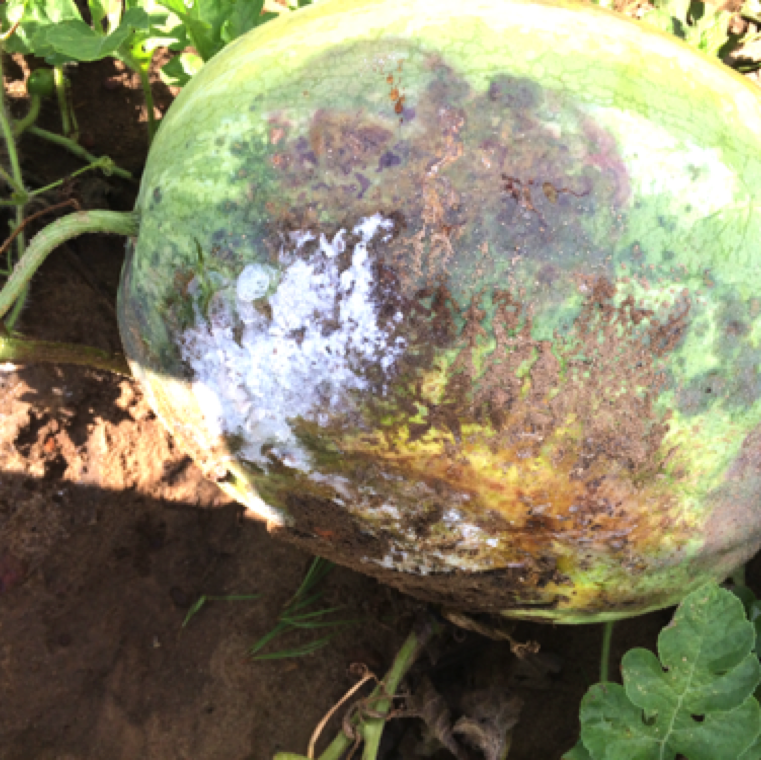
The infect fruits can develop large blotched sections and white mycelial growth. Infection typically starts at the section of the fruit in contact with the soil or in plastic with standing water.
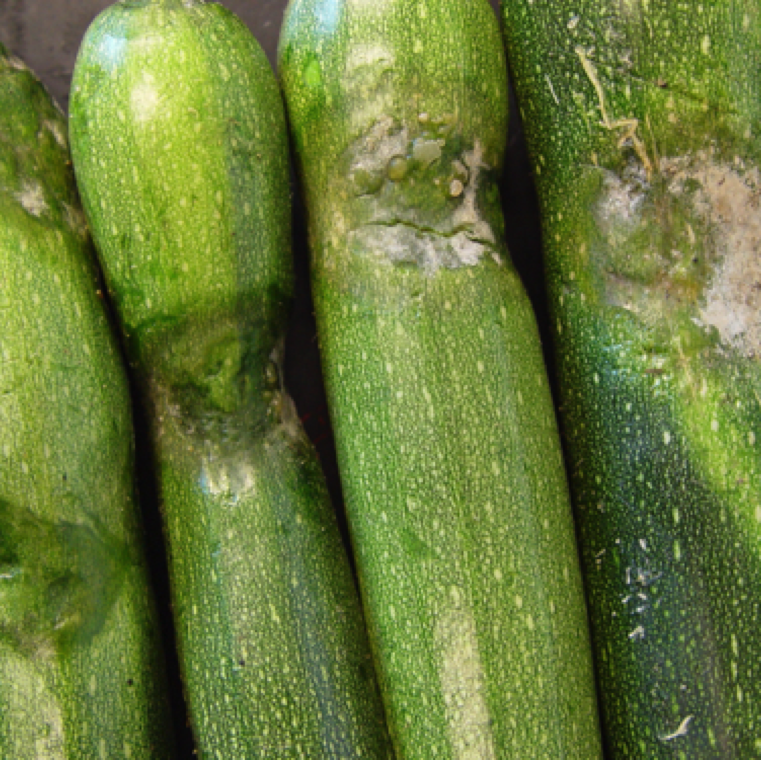
In case of zucchini, sunken water-soaked sections can be seen. Subsequently fruits can be seen with white mycelial growth. Infected fruits with no symptoms can have post-harvest decay during transit.
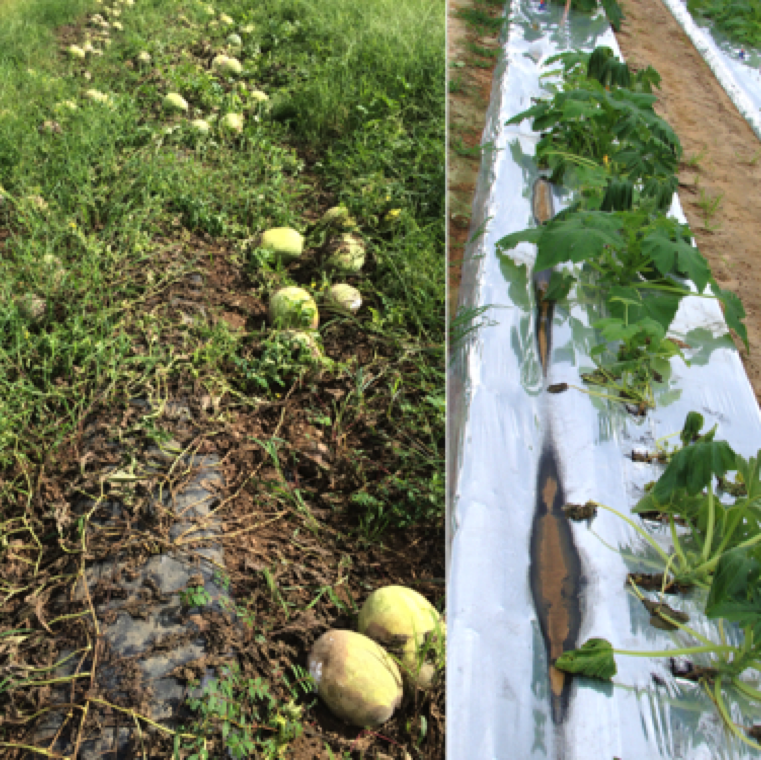
A watermelon field with 100% loss in yield due to Phytophthora fruit rot is to the left. On the right, is a research trial with plants showing wilting symptoms due to Phytopthora root and crown rot.
PHYTOPHTHORA CROWN and ROOT ROT/ FRUIT ROT
Oomycete causal agent: Phytophthora capsici
Cucurbit diseases
